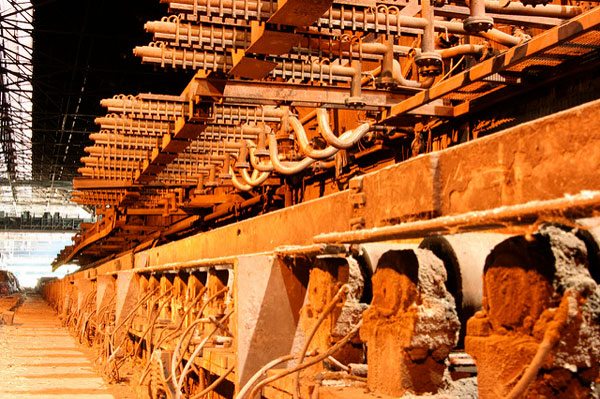
October 10, 2017; Next City
“Smaller legacy cities have been part of some of America’s most historic achievements, from Lowell’s role in the women’s suffrage movement to Youngstown, Ohio’s contribution to the Allied victory in World War II—manufacturing what President Roosevelt called the ‘arsenal of democracy,’” note Armando Carbonell, planning department chair at the nonprofit Lincoln Institute of Land Policy, and Torey Hollingsworth, research and policy manager at the nonprofit advocacy group Greater Ohio Policy Center, in a Next City article. Such cities, they add, “stand at the center of the national struggle with inequality.”
They have a greater percentage of middle-class residents than the nation, but they are losing them at a faster rate as high- and low-income populations grow. Left unchecked, disparities of income and wealth will continue to take physical form, carving out neighborhoods without access to jobs, transportation, and clean air, and undermining social stability.
Hollingsworth, along with her Greater Ohio colleague Allison Goebel, authored a study published by Lincoln in August, titled “Revitalizing America’s Smaller Legacy Cities: Strategies for Postindustrial Success from Gary to Lowell.” In the study, Hollingsworth and Goebel examine 24 cities with populations between 30,000 and 200,000, located in former industrial centers that stretch from Massachusetts and New York in the northeast to the mid-Atlantic states of New Jersey and Pennsylvania to the Midwestern industrial heartland of Indiana, Ohio, and Michigan.
As the authors point out, “The challenges faced by smaller legacy cities loom large in the American imagination. It’s no coincidence that Billy Joel and Bruce Springsteen chose Allentown, Pennsylvania, and Youngstown, Ohio, respectively, as symbols of the demise of a certain kind of American dream.” A troubling statistic from their report: “All cities, even those whose population grew, saw poverty increase and household incomes drop between 2000 and 2015.” The report does not purport to explain the 2016 election results, but this may be as succinct an explanation as any.
Sign up for our free newsletters
Subscribe to NPQ's newsletters to have our top stories delivered directly to your inbox.
By signing up, you agree to our privacy policy and terms of use, and to receive messages from NPQ and our partners.
The focus of the study is not on the role of nonprofits per se—and yet, if you look under the covers, nonprofits are central to the report. Among the key findings from the two dozen cities studied:
- By and large, they have an outsized “percentage of land owned by nonprofit organizations that produce no tax revenue.”
- Core nonprofit sectors—education, health care and social assistance—alone are responsible for 37 percent of city resident employment and 28 percent of metro region employment.
- Arts, recreation, and food service—an odd joining of sectors to be sure—employ as many people as manufacturing: 12 percent of residents have jobs in these sectors combined, while 13 percent of city residents work in manufacturing. Of course, nonprofits are key players in the arts and recreation sectors.
Even more significantly, the authors note that, “The most important employment trend in small and midsize legacy cities over the last 15 years has been the massive growth of health care and education.” They continue:
Health care and social assistance make up the largest source of jobs in all but two cities: Albany, where government functions eclipse them, and Gary, where manufacturing jobs remain dominant. The sector accounts for one in every five jobs in nearly every city in the study and, in a few cases, as many as one in every three. If jobs in the education sector are included, the power of these industries is even greater. In some cities, health care, education, and social services account for nearly half of the jobs located in the city held either by city residents or by commuters from surrounding areas.
The Next City article highlights three of the report’s recommendations—build pipelines for talent, create cross-sector teams, and support new leadership. Nothing wrong with these, but not terribly novel either. More interesting are some nonprofit examples in the report. These include a nonprofit in South Bend called enFocus, which deploys Notre Dame’s graduate students to act as a “really smart SWAT team” to help local nonprofits, and Link Lima in Lima, Ohio, which hosted a “reverse job fair” where 50 employers met with 1,100 high students who attend technical skills high schools. The authors note that the “welding competition was swept by three young women—one of whom received a job offer on the spot for after she finished high school.” In Bethlehem, Pennsylvania, a nonprofit called ArtsQuest, hosts “Musikfest, the nation’s largest free music festival, which is estimated to produce a $55 million annual impact on the region’s economy.” In short, nonprofits are actively creating economic solutions in these communities.
Missing here is a more nuanced discussion of the role of anchor institutions. To be sure, big anchors may not be present in some of these cities, but if “eds and meds” along with social services employ 37 percent of metro residents, then smaller anchors almost by definition abound. In other words, because nonprofits employ a disproportionate share of area residents and are also beneficiaries of property tax exemptions in often tax-starved cities, the opportunity for nonprofit anchor institutions to help improve the economies of their host cities by leveraging their assets strategically, such as through increasing local hiring, local procurement, and local investment, has never been greater.—Steve Dubb












